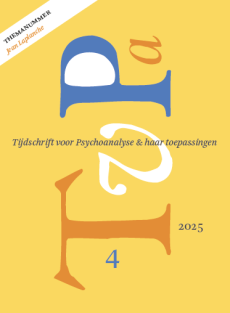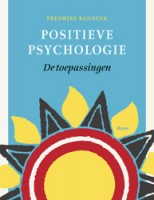Reflecties over empathie
Summary
The author discusses the role of empathy in his professional life. He seeks to answer questions about the concept of empathy and its key role in the psychoanalytic process, especially with regard to the timing and phrasing of interpretations.
Capacity for empathy is a positive criterion in selection of candidates for psychoanalytic training.
The teaching of empathy is an important issue in the supervisory process, but there are limits to the extent to which empathy can be taught. Especially with patients who are prone to action instead of verbalisation, as a result of their early-rooted emotional disturbances, the psychoanalyst needs his empathy in order to understand the analytic material.
The author illustrates his theoretical understanding with extensive clinical material from two analyses.
Literatuur
- Blécourt, A. de, (1974). Overdracht, tegenoverdracht en ageren in de psychoanalyse. Tijdschrift voor Psychiatrie, 16, 678-700.
- Blécourt, A. de, Beenen, F., Gones-Spanjaard C., Hommes, H., Verhage-Stins, L. & Verhage, F. (1981). Het samenwerkingsverbond (working alliance) van patiënt en analyticus. Tijdschrift voor Psychotherapie, 7 (6), 307-317.
- Blécourt, A. de (1993). Transference, Countertransference and Acting Out in Psychoanalysis, International Journal of Psychoanalysis, 74 (4), 757-774.
- Brenner, C. (1976). Psychoanalytic Technique and Psychic Conflict. New York: International Universities Press.
- Coultre, R. le (1972). Het ziektebeeld van de chronische depersonalisatie. In W.R van Leeuwen, J. Spanjaard & H.A. van der Sterren (red.), Psychoanalytische thema’s en variaties, p. 11-26. Deventer: Van Loghum Slaterus.
- Fenichel, O. (1945). The Psychoanalytic Theory of Neurosis. New York: Norton Company.
- Freud, S. (1913a). Ratschläge für den Arzt bei der psychoanalytischen Behandlung. Gesammelte Werke 8, p. 376-387. Frankfurt am Main: S. Fischer.
- Freud, S. (1913b). Zur Einleitung der Behandlung. Gesammelte Werke 8, p. 454-478. Frankfurt am Main: S. Fischer.
- Frijling-Schreuder, E.C.M. (1970). On Individual Supervision. International Journal of Psychoanalysis, 51, 363-371.
- Kligerman, C. (1978). Report of the Study Committee on the Evaluation of Applicants for Psychoanalytic Training. International Journal of Psychoanalysis, 59, 79-85.
- Lampl-de Groot, J. (1967). On obstacles standing in the way of psychoanalytic cure. In J. Lampl-de Groot, Man and Mind, Collected Papers, p. 284-295. New York/Assen: International Universities Press/Van Gorcum (1985).
- Pierloot, R.A. & Thiel, J.H. (1986). Theoretische grondslagen van psychoanalytische therapieën. In R.A. Pierloot & J.H. Thiel (red.), Psychoanalytische Therapieën, p. 36-185. Deventer: Van Loghum Slaterus.
- Rogers, C.R. (1957). The necessary and sufficient conditions of therapeutic personality change. Journal of Counseling Psychology, 21, 95-103.
- Schalken, H.F.A., Dam, Q. van, Meij, G. de, Panhuysen, L.H.M., Spek, S. van der & Verhage, F. (1998). Een poging tot operationalisering van het psychoanalytisch proces. Mededelingenblad van de NVPA, 13 (6), 182-198.
- Schwaber, E.A. (1981). Empathy: a mode of analytic listening. Psychoanalytic Inquiry, 1, 357-392.
- Schwaber, E.A. (1995). Towards a definition of the term and concept of interaction. International Journal of Psychoanalysis, 76 (3), 557-564.
- Spanjaard, J. (1988). Kohut en de analyse van de grootheidswaan. In W.F. van Leeuwen (red.), Over dromen en grootheidswanen, p. 68-95. Meppel: Boom.
- Strien, A.P.M. van (1999). Empathie. Een kwaliteitsaspect van de psychoanalytische praktijk? Academisch proefschrift. Amsterdam: Thela Theena.
- Waning, A. van (1994). Geen woorden maar daden. Academisch proefschrift. Amsterdam: Thesis Publishers.
 © 2009-2025 Uitgeverij Boom Amsterdam
© 2009-2025 Uitgeverij Boom Amsterdam
ISSN 1382-516x
De artikelen uit de (online)tijdschriften van Uitgeverij Boom zijn auteursrechtelijk beschermd. U kunt er natuurlijk uit citeren (voorzien van een bronvermelding) maar voor reproductie in welke vorm dan ook moet toestemming aan de uitgever worden gevraagd:
Behoudens de in of krachtens de Auteurswet van 1912 gestelde uitzonderingen mag niets uit deze uitgave worden verveelvoudigd, opgeslagen in een geautomatiseerd gegevensbestand, of openbaar gemaakt, in enige vorm of op enige wijze, hetzij elektronisch, mechanisch door fotokopieën, opnamen of enig andere manier, zonder voorafgaande schriftelijke toestemming van de uitgever.
Voor zover het maken van kopieën uit deze uitgave is toegestaan op grond van artikelen 16h t/m 16m Auteurswet 1912 jo. Besluit van 27 november 2002, Stb 575, dient men de daarvoor wettelijk verschuldigde vergoeding te voldoen aan de Stichting Reprorecht te Hoofddorp (postbus 3060, 2130 KB, www.reprorecht.nl) of contact op te nemen met de uitgever voor het treffen van een rechtstreekse regeling in de zin van art. 16l, vijfde lid, Auteurswet 1912.
Voor het overnemen van gedeelte(n) uit deze uitgave in bloemlezingen, readers en andere compilatiewerken (artikel 16, Auteurswet 1912) kan men zich wenden tot de Stichting PRO (Stichting Publicatie- en Reproductierechten, postbus 3060, 2130 KB Hoofddorp, www.cedar.nl/pro).
No part of this book may be reproduced in any way whatsoever without the written permission of the publisher.
Nieuwsbrief Boom Psychologie
Meld u nu aan en ontvang maandelijks de Boom Psychologie nieuwsbrief met aantrekkelijke aanbiedingen en de nieuwe uitgaven.
Aanmelden


